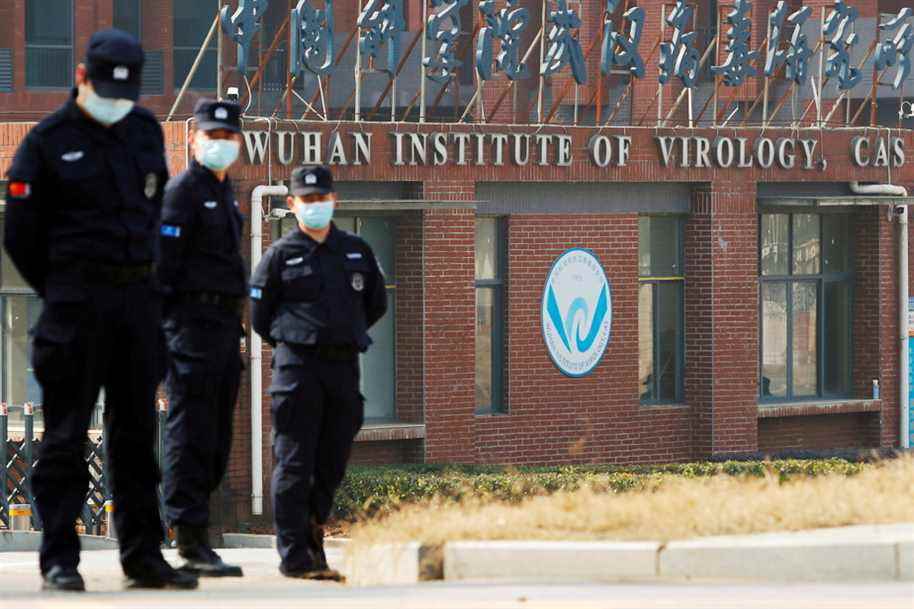Behind the pandemic there is a quest for truth to find out the origin of the virus. Epidemiologists and virologists are hard at work to understand what could have happened. Where did the first outbreaks take place? Who are the first people to be infected? Which animal could have served as a host in the transmission of the virus? And what evolutionary mechanism allowed the virus to jump from animals to humans?
But almost two years after the first report of COVID-19, significant doubts still remain as to the origin of the virus, Philippe Mercure reported in Press October 11.1
The first official pandemic announcement was made on December 31, 2019 by the Wuhan Municipality Health Commission in China. The Commission then reported several cases of atypical pneumonia linked to a Wuhan market. However, at this market, there were more than 50,000 live animals from 38 different species. Animals like mink and civet that could have served as vectors for the virus.
And there, scientists were able to isolate the virus on market surfaces. This prompted a virologist who worked on coronaviruses to say that the market must be infested with viruses.
In a comprehensive study published in the journal Nature March 2020, researchers conclude that a SARS-CoV-2 progenitor could have jumped from animals to humans and that the market may well have played a role in the transmission of the virus. Scientists favor the thesis of a virus that jumped from bats to animals before infecting humans because bats are known carriers of coronavirus. In addition, researchers have found viruses in certain bat species in southern China with genomes that resemble that of SARS-CoV-2.
The Leak Theory
Of course, sometimes viruses can escape from a laboratory. Several have pointed out that the fact that the pandemic started so close to the Wuhan Institute of Virology is a surprising coincidence. And with the Chinese government so uncooperative, the doubt persists.
However, last September, DRASTIC, a group of internet activists, launched a bombshell by disclosing a rather controversial grant request made to the Pentagon and dating from 2018. The document is a request for a grant of 14.2 million dollars for research into emerging infectious diseases by EcoHealth Alliance President Peter Daszak and some partners including University of North Carolina virologist Ralph Baric and virus hunter Shi Zhengli of the ‘Wuhan Institute of Virology.
The submitted project includes research to combat the risks of coronaviruses from bats, but there is also a plan to study potentially dangerous pathogens by generating infectious coronaviruses in the lab and inserting genetic traits that might infect them better. human cells.
The researchers wanted to examine the genomic sequences of bat samples for novel furin cleavage sites. When encoded in the right place, the sequence allows Spike to be cut by an enzyme found in human cells and thus infect the cell.
The presence of the furin cleavage site is not necessarily a Frankenstein experiment gone wrong. These genetic traits are found on other coronaviruses naturally and independently. However, it is particular that researchers have considered such experiments when one of the characteristics of SARS-CoV-2 is precisely to have a furin cleavage site. The United States Department of Defense has since reacted to ensure that the grant application was rejected.
Frankenstein vs. Asilomar
Mary Shelley’s novel Frankenstein, written in 1818, is the story of a scientist, Doctor Victor Frankenstein, who, obsessed with death, creates the monster that everyone knows. The story is a reflection on the responsibilities of the scientist and the danger of ignoring them.
In 1974, scientists who used molecular techniques to cut DNA between different organisms asked the National Academy of Sciences to assess the risks and impose a moratorium on a number of experiments. In February 1975, at the Asilomar conference in California, more than 100 scientists from around the world gathered to discuss the way forward.
And from this conference, categories of experience were graded according to their risks. Some were designated too dangerous, while others could be allowed if measures to contain the risk were put in place. These recommendations became the basis for rules adopted around the world.
For many scientists, Asilomar has become a symbol of the social responsibility of science to prevent any Frankenstein-style germ from escaping and causing harm.
Professor Erwin Chargaff, on the sidelines of the Asilomar summit, asked the following questions: do we have the right to irreversibly manipulate the evolution of millions of years to satisfy the ambition and curiosity of a few? scientists? Does everything that can be done in research have to be done?
As of this writing, we have no evidence that researchers have manipulated a coronavirus or that a virus has escaped from a lab. Nevertheless, it is worrying to learn that researchers have considered experiments with genetic recombination of the virus to infect human cells more easily. In light of the DRASTIC revelations, Asilomar’s lessons are as relevant today as they once were.
1. Read “A pandemic to understand” What do you think? Express your opinion

